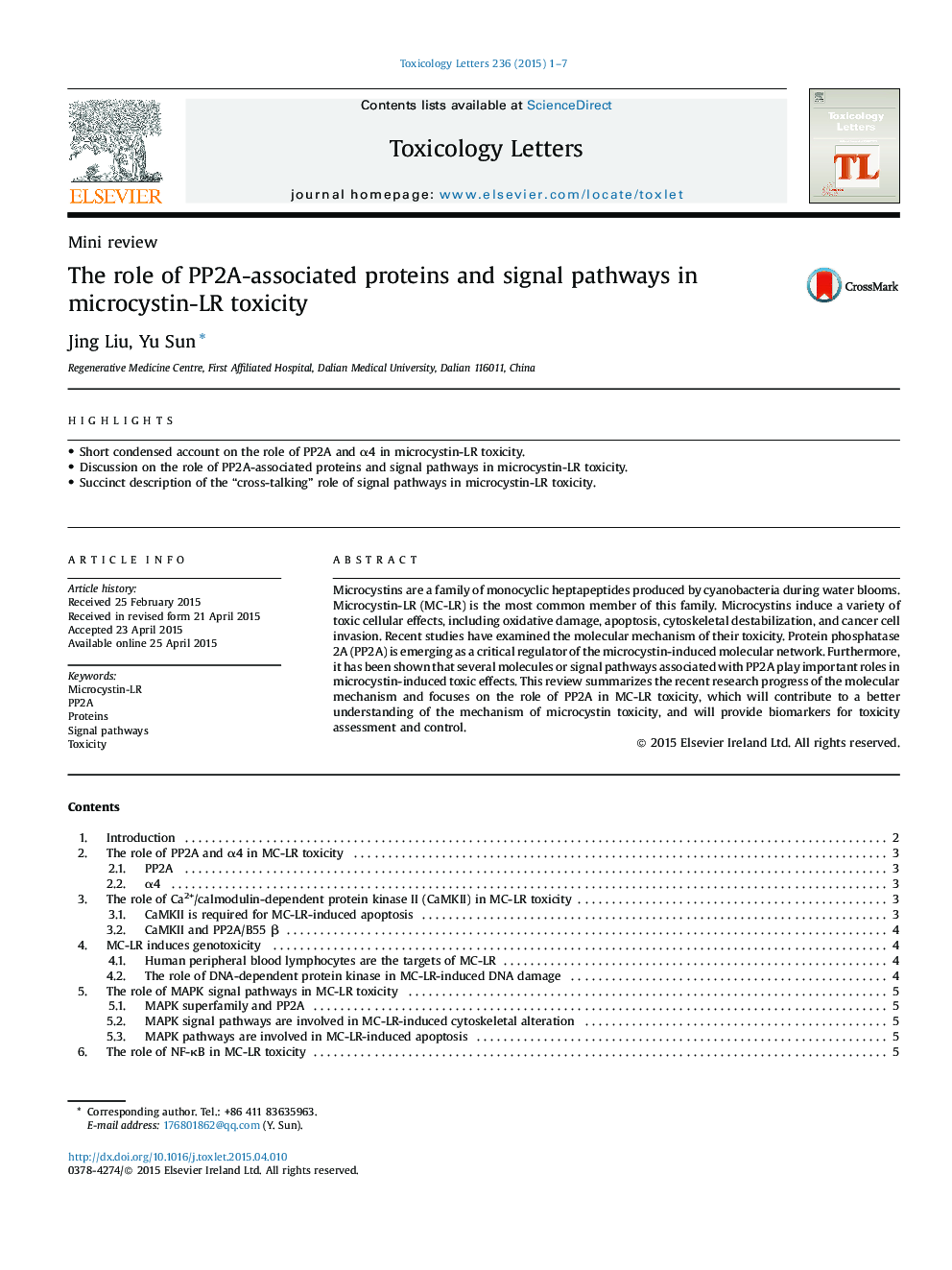| Article ID | Journal | Published Year | Pages | File Type |
|---|---|---|---|---|
| 2598697 | Toxicology Letters | 2015 | 7 Pages |
•Short condensed account on the role of PP2A and α4 in microcystin-LR toxicity.•Discussion on the role of PP2A-associated proteins and signal pathways in microcystin-LR toxicity.•Succinct description of the “cross-talking” role of signal pathways in microcystin-LR toxicity.
Microcystins are a family of monocyclic heptapeptides produced by cyanobacteria during water blooms. Microcystin-LR (MC-LR) is the most common member of this family. Microcystins induce a variety of toxic cellular effects, including oxidative damage, apoptosis, cytoskeletal destabilization, and cancer cell invasion. Recent studies have examined the molecular mechanism of their toxicity. Protein phosphatase 2A (PP2A) is emerging as a critical regulator of the microcystin-induced molecular network. Furthermore, it has been shown that several molecules or signal pathways associated with PP2A play important roles in microcystin-induced toxic effects. This review summarizes the recent research progress of the molecular mechanism and focuses on the role of PP2A in MC-LR toxicity, which will contribute to a better understanding of the mechanism of microcystin toxicity, and will provide biomarkers for toxicity assessment and control.
